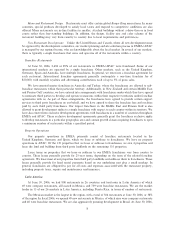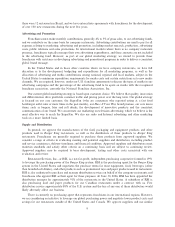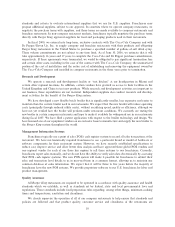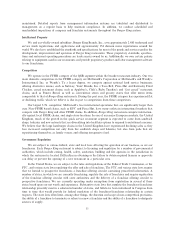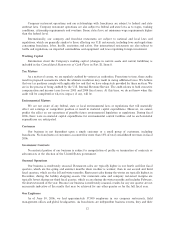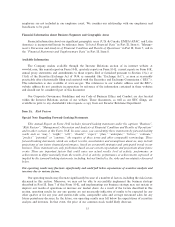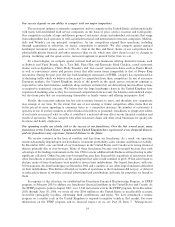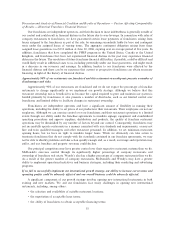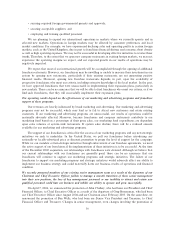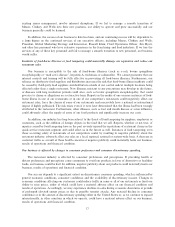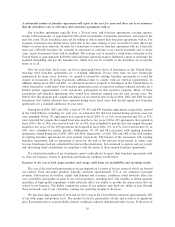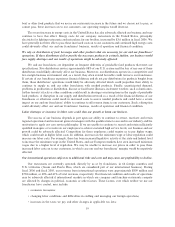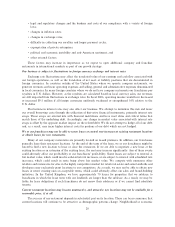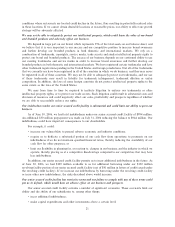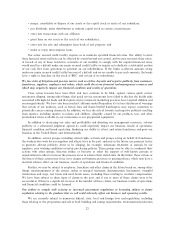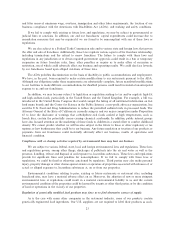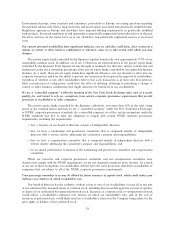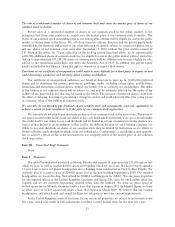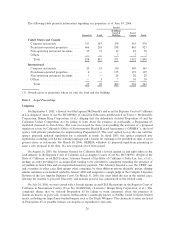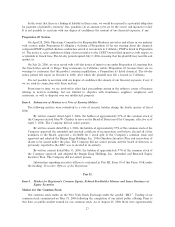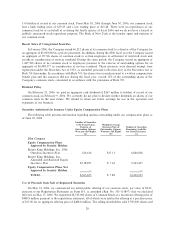Burger King 2006 Annual Report Download - page 30
Download and view the complete annual report
Please find page 30 of the 2006 Burger King annual report below. You can navigate through the pages in the report by either clicking on the pages listed below, or by using the keyword search tool below to find specific information within the annual report.A substantial number of franchise agreements will expire in the next five years and there can be no assurance
that the franchisees can or will renew their franchise agreements with us.
Our franchise agreements typically have a 20-year term, and franchise agreements covering approxi-
mately 2,000 restaurants, or approximately 20% of the total number of franchise restaurants, will expire in the
next five years. These franchisees may not be willing or able to renew their franchise agreements with us. For
example, franchisees may decide not to renew due to low sales volumes or may be unable to renew due to the
failure to secure lease renewals. In order for a franchisee to renew its franchise agreement with us, it typically
must pay a $50,000 franchise fee, remodel its restaurant to conform to our current standards and, in many
cases, renew its property lease with its landlord. The average cost to remodel a stand-alone restaurant in the
United States is approximately $230,000 and franchisees generally require additional capital to undertake the
required remodeling and pay the franchise fee, which may not be available to the franchisee on acceptable
terms or at all.
Over the past three fiscal years, we have experienced lower levels of franchisees in the United States
renewing their franchise agreements for a standard additional 20-year term than we have historically
experienced. In many cases, however, we agreed to extend the existing franchise agreements to avoid the
closure of restaurants by giving franchisees additional time to comply with our renewal requirements. In
addition, during fiscal 2000 and 2001, we offered an incentive program to franchisees in the United States in
which franchisees could renew their franchise agreements prior to expiration and pay reduced royalties for a
limited period. Approximately 1,100 restaurants participated in this incentive program. Many of these
participants had franchise agreements that would have otherwise expired over the next several years. We
believe that this program had a significant impact on our renewal rates in fiscal 2004, 2005 and 2006 because
franchisees that would otherwise have renewed during those fiscal years had already signed new franchise
agreements for a standard additional 20-year term.
During fiscal 2004, 2005 and 2006, a total of 333, 435 and 409 franchise agreements, respectively, expired
in the United States, including, for each year, an estimated 150 that had expired during previous years but
were extended. Of the 333 agreements that expired in fiscal 2004, 53, or 16%, were renewed and 103, or 31%,
were extended for periods that ranged from nine months to two years. Of the 435 agreements that expired in
fiscal 2005, 168, or 39%, were renewed and 130, or 30%, were extended for periods that also ranged from nine
months to two years. Of the 409 agreements that expired in fiscal 2006, 191, or 47%, were renewed and 113, or
28%, were extended for similar periods. Additionally, 87, 89 and 98 restaurants with expiring franchise
agreements closed during fiscal 2004, 2005 and 2006, respectively, or 26%, 20% and 24% of the total number
of expiring franchise agreements for such periods, respectively. The balance of the restaurants with expiring
franchise agreements had no agreement in place by the end of the relevant fiscal period, in many cases
because franchisees had not completed the renewal documentation, but continued to operate and pay royalty
and advertising fund contributions in compliance with the terms of their expired franchise agreements.
If a substantial number of our franchisees cannot or decide not to renew their franchise agreements with
us, then our business, results of operations and financial condition would suffer.
Increases in the cost of food, paper products and energy could harm our profitability and operating results.
The cost of the food and paper products we use depends on a variety of factors, many of which are beyond
our control. Food and paper products typically represent approximately 31% of our company restaurant
revenues. Fluctuations in weather, supply and demand and economic conditions could adversely affect the
cost, availability and quality of some of our critical products, including beef. Our inability to obtain requisite
quantities of high-quality ingredients would adversely affect our ability to provide the menu items that are
central to our business. The highly competitive nature of our industry may limit our ability to pass through
these increased costs to our customers, causing our operating margins to decrease.
We purchase large quantities of beef and our beef costs in the United States represent approximately 20%
of our food, paper and product costs. The market for beef is particularly volatile and is subject to significant
price fluctuations due to seasonal shifts, climate conditions, industry demand and other factors. If the price of
18


